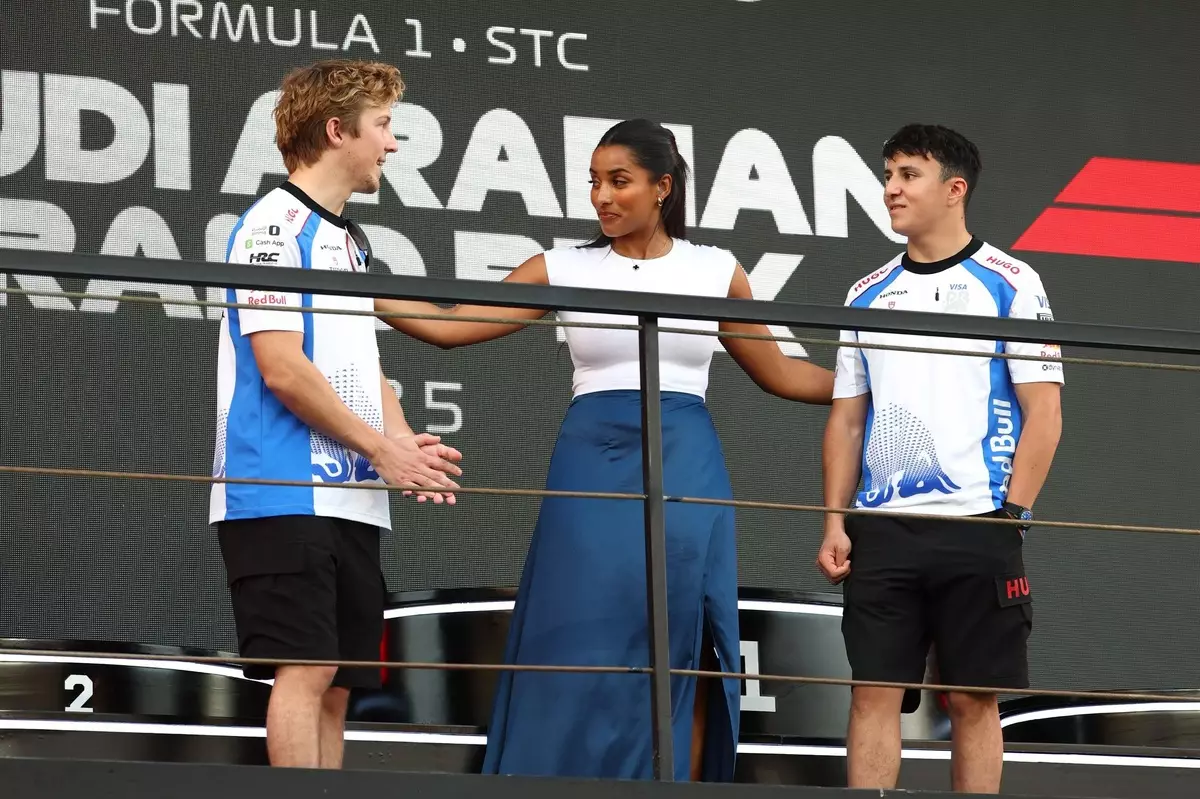In the high-stakes environment of Formula 1, where precision and performance dictate outcomes, young drivers frequently grapple with pressures that can either make or break their careers. The case of Isack Hadjar and Liam Lawson, two promising talents from the Faenza-based Racing Bulls team, exemplifies this brutal truth. Their recent experiences highlight the nuances of adaptation, strategy, and the ever-present need for resilience in the face of adversity.
Lawson’s Road to Recovery
Following a demotion from Red Bull, Liam Lawson faced the daunting challenge of re-establishing himself within a new team setting. His recent performance at the Saudi Arabian Grand Prix demonstrates his effective adaptation to the Racing Bulls squad. Clocking in faster qualifying times than Hadjar for the first time, Lawson outpaced his teammate, displaying the tenacity that defines a skilled driver. This newfound speed, paired with Hadjar’s recognition of his growing strength, symbolizes a crucial turning point for Lawson. The camaraderie and competitive spirit between the two drivers are palpable, highlighting how peer dynamics can foster improvement and push boundaries.
Despite Lawson finishing 11th, narrowly missing points due to a penalty, his resolve remained unshaken. He expressed frustration over his strategy’s inefficacies but did not waver in terms of self-belief. His ability to overtake established names like Fernando Alonso and Esteban Ocon, albeit temporarily, showcases a tenacity that transcends mere results. Lawson’s declaration that he feels “fully dialed in” is not just a personal statement but a testament to his growth as a professional athlete navigating the complexities of racing dynamics.
Hadjar’s Perfectly Imperfect Race
On the other hand, Isack Hadjar’s journey, though marked by a commendable tenth-place finish, was infused with a sense of frustration. He crafted a narrative of resilience, bouncing back from a disastrous crash in Australia that thwarted his season opener. His “perfect race,” achieved with an alternate hard/medium strategy, is a reflection of his strategic acumen and execution. However, the reality of being unable to displace Carlos Sainz and Alex Albon in the closing stages of the race—despite having fresher tires—underscores the harsh lesson of motorsport: perfection does not always equate to reward.
Hadjar’s candidness in expressing disappointment over securing only a single point despite an impressive drive shows maturity beyond his years. It is a sobering reminder that in Formula 1, circumstances can shift dramatically, and even when a driver performs exceptionally, external factors can thwart their ambitions. Acknowledging that the battle with established drivers hampers their scoring opportunities reflects the intricate web of competition in F1, where every lap is a lesson in humility.
The Balancing Act of Strategy
Both drivers embodied a collective narrative of endurance amidst unpredictability in Saudi Arabia, navigating the intricacies of tire strategies and race traffic. Lawson’s choice to adopt a conventional tire strategy may have failed him, but it illustrates an essential facet of racing: risk management. Result-oriented ambitions often dictate one’s choices, a reality both drivers learned firsthand during a period when resourcefulness becomes as critical as skill.
The young racers’ remarks about striving for improvement signal their understanding of the broader competitive landscape that includes top-tier teams like Red Bull and Ferrari. Their acknowledgment of being “not quite on the speed” of leading competitors emphasizes the fine line between aspiration and reality in Formula 1. It’s this drive for self-betterment that primes them for future successes.
The Role of Mentorship and Support
A significant influencer in their growth is the environment fostered within the Racing Bulls team. With experienced professionals providing guidance, Hadjar and Lawson are afforded the opportunity to learn quickly from their mistakes. The collective spirit of competition within the team can be a double-edged sword; while it fosters performance, it can heighten the specter of underachievement. Still, it is this very juxtaposition of rivalry and support that may well serve as the bedrock of future achievements for both drivers.
While Lawson and Hadjar continue to chase excellence in a competitive milieu, their journey reflects the essential truth of Formula 1: success is stitched together with threads of hard work, perseverance, and an unwavering desire to learn. They are navigating a path laden with challenges, yet fueled by the aspiration to transform setbacks into stepping stones toward greatness.


Leave a Reply